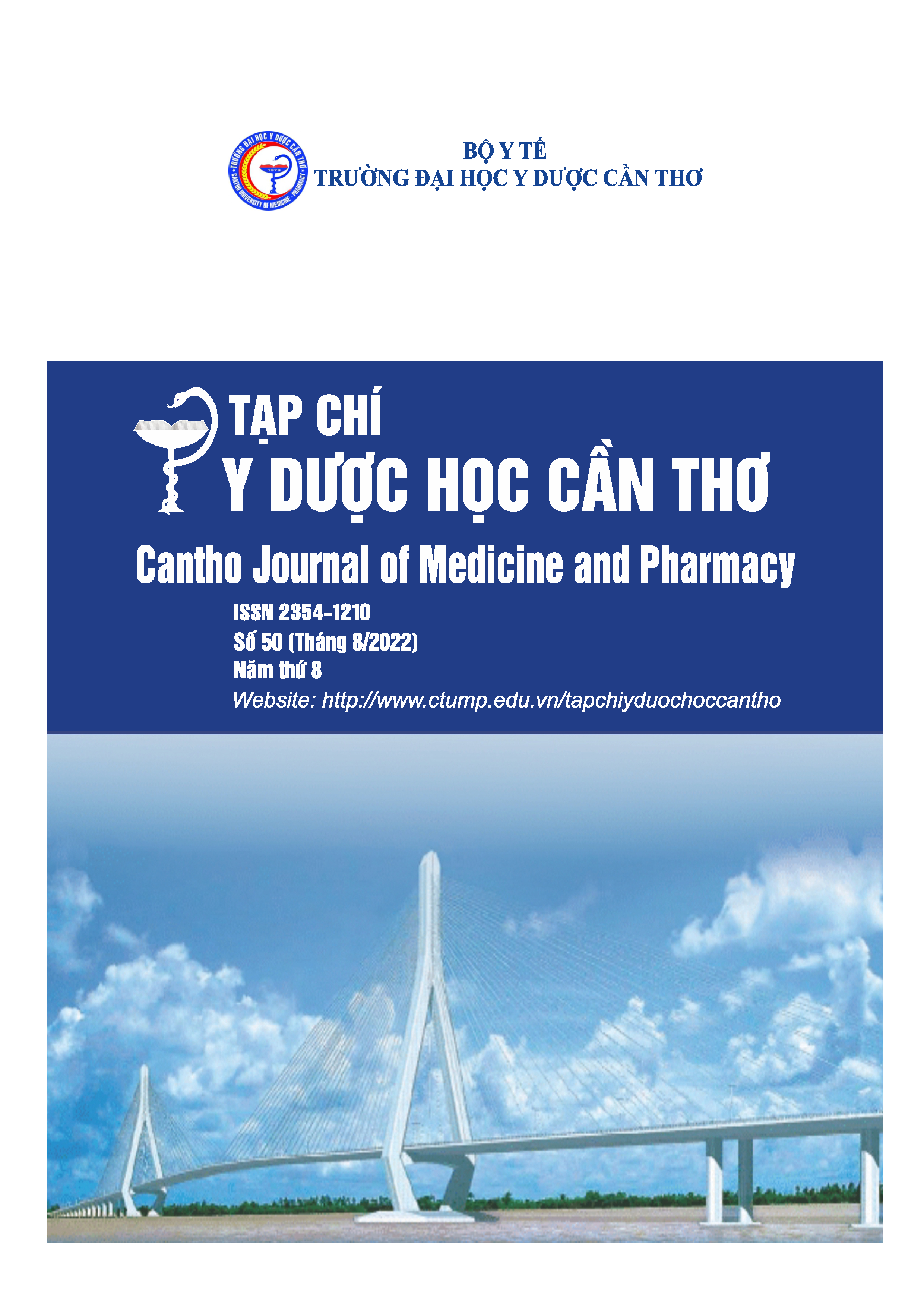STUDY ON THE SITUATION OF USE OF DRUGS IN TREATMENT DYSLIPIDEMIA IN OUTPATIENTS AT CAN THO GENERAL HOSPITAL IN 2021-2022
Main Article Content
Abstract
Background: Treatment of dyslipidemia plays an important role in the primary and secondary prevention of atherosclerotic vascular disease, especially coronary artery disease. Objectives: Determining the characteristics of drug use and evaluating the rationality in using drugs to treat dyslipidemia in outpatients at Can Tho General Hospital in 2021-2022. Materials and methods: A cross-sectional descriptive study was conducted on 222 patients treated at the outpatient Department of Can Tho General Hospital from April 1st, 2021 to April 30th, 2022. The rationale for assessing the rationality is based on the recommendations of the Vietnam National Heart Association 2015 and ESC/EAS 2019. Data were collected from outpatients and patient interviews. Results: Statin group was used the most with the rate of 95.5%; moderate intensity statin dominated 77.5%, of which rosuvastatin 10 mg (33.2%), rosuvastatin 5mg (23.1%), atorvastatin 10mg (18.2%). Monotherapy and multidrug regimens were 99.5% and 0.5%, respectively. The reasonable rate of a decision to initiate drug therapy was 94.6%; reasonable selection of starting drugs 42.9%; reasonable starting dose according to liver function 99.5%; reasonable starting dose according to renal function 97.7%; adverse drug interactions in 78,4% reasonable prescriptions. The overall reasonable rate of using drugs to treat dyslipidemia was 33.8%. Conclusion: The statin regimen is the preferred choice in the treatment of dyslipidemia, but the rate of rational drug use is still low, so doctors should update more current treatment recommendations, individualizing each patient to be able to choose the right treatment.
Article Details
Keywords
Drug use, dyslipidemia, outpatients
References
2. Nguyễn Toàn Thắng (2013), “Đánh giá sử dụng thuốc điều trị rối loạn lipid máu tại Viện Y học hàng không”, Luận án dược sĩ chuyên khoa cấp II, Trường Đại học Dược Hà Nội.
3. Trương Huỳnh Kim Ngọc (2017), “Phân tích tình hình sử dụng thuốc điều trị rối loạn lipid máu trên bệnh nhân ngoại trú tại Bệnh viện Tim mạch Cần Thơ”, Luận văn Thạc sĩ Dược học, Trường Đại Học Dược Hà Nội.
4. Trương Quang Thái (2021), “Nghiên cứu tình hình sử dụng thuốc điều trị rối loạn lipid máu ở bệnh nhân nội trú tại bệnh viện trường Đại học y dược Cần Thơ”, Luận văn Thạc sỹ dược học, Trường Đại học Y Dược Cần Thơ.
5. Genest J. & Libby P. (2011), “Lipoprotein disorders and cardiovascular disease - Chapter 47”, Braunwald's Heart Disease 9th edition.
6. Rader, D. J., & Khetarpal, S. A., (2015), “Lipoprotein Physiology”, Dyslipidemias, pp.1-12.
7. Statista Research Department (2020), Main causes of deaths based on the number of deaths in Vietnam in 2017, [cited 2021 January 17], Available from: https://www.statista.com/statistics/1107639/vietnam-number-of-deaths-by-cause/8.
8. Tsao, C. W., A. W. Aday, Z. I. Almarzooq, et al. (2022), “Heart Disease and Stroke Statistics-2022 Update: A Report From the American Heart Association”, Circulation, 145(8), pp.e153-e639.
9. Mach F., Baigent C., Catapano A. L., et al. (2019), “2019 ESC/EAS Guidelines for the management of dyslipidaemias: lipid modification to reduce cardiovascular risk”, European Heart Journal, 41(1), pp.111-188.
10.Park J. E., Chiang C. E., Munawar M., et al. (2012), “Lipid-lowering treatment in hypercholesterolaemic patients: the CEPHEUS Pan-Asian survey”, Eur J Prev Cardiol, 19(4), pp.781-794.


